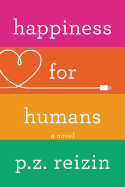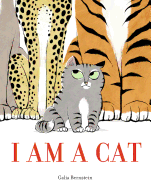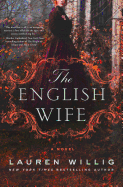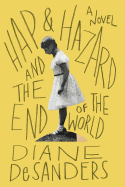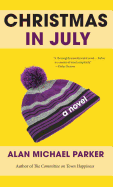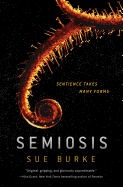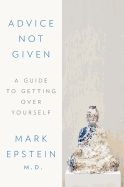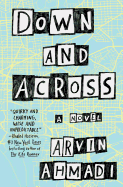Tuesday, February 6, 2018
I've had a hankering for Cold War-related fiction lately. Current politics, perhaps? The long, dark winter nights? Or maybe it's simply the word "cold"--and those of you in the frigid parts of the country surely understand the urge to stay indoors and read. Some recent first-rate espionage books stand at the ready.
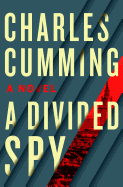 It's been 25 years since spy master John le Carré released a George Smiley novel--and A Legacy of Spies (Viking) was well worth the wait. Dedicated Secret Service agent Peter Guillam must press pause on his English coastal retirement life and return to London when his Cold War past comes under fire. Le Carré is on point with this atmospheric thriller that will leave readers eager to revisit earlier Smiley adventures. As twist-and-turny as they come, Charles Cumming's A Divided Spy (St. Martin's Press) finds former agent Thomas Kell retired, too. That is, until he's given the opportunity to catch Russian spy Alexander Minasian, the man responsible for the death of Kell's fiancée.
It's been 25 years since spy master John le Carré released a George Smiley novel--and A Legacy of Spies (Viking) was well worth the wait. Dedicated Secret Service agent Peter Guillam must press pause on his English coastal retirement life and return to London when his Cold War past comes under fire. Le Carré is on point with this atmospheric thriller that will leave readers eager to revisit earlier Smiley adventures. As twist-and-turny as they come, Charles Cumming's A Divided Spy (St. Martin's Press) finds former agent Thomas Kell retired, too. That is, until he's given the opportunity to catch Russian spy Alexander Minasian, the man responsible for the death of Kell's fiancée.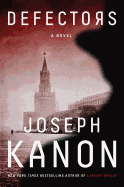 Joseph Kanon's pitch-perfect Defectors (Atria) takes place at the height of the Cold War when a pair of brothers, one a straightlaced State Department man and the other a CIA traitor, suddenly find themselves back in each other's lives. Who can be trusted? It's anyone's guess.
Joseph Kanon's pitch-perfect Defectors (Atria) takes place at the height of the Cold War when a pair of brothers, one a straightlaced State Department man and the other a CIA traitor, suddenly find themselves back in each other's lives. Who can be trusted? It's anyone's guess. 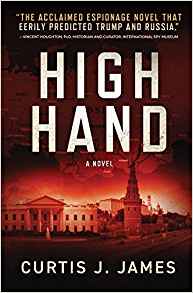 And last, but certainly not least, the timely High Hand by Curtis James (Copper Peak Press) is a taut thriller that follows former Moscow correspondent Frank Adams as he uncovers the truth behind a presidential candidate and ties to the Russian government. --Stefanie Hargreaves, editor, Shelf Awareness for Readers
And last, but certainly not least, the timely High Hand by Curtis James (Copper Peak Press) is a taut thriller that follows former Moscow correspondent Frank Adams as he uncovers the truth behind a presidential candidate and ties to the Russian government. --Stefanie Hargreaves, editor, Shelf Awareness for Readers
Happiness for Humans
by P.Z. Reizin
British author P.Z. Reizin takes online dating to a new level with a rom-com debut starring a charming couple and their cyber-pals.
Sentient artificial-intelligence software program Aiden worries that his coworker Jen, the Londoner hired to help him become a more realistic companion, will never find a worthy boyfriend. Under the influence of too many romantic film plots, Aiden takes matters into his own lines of code. Armed with info gleaned by watching Jen's life through her electronic devices, he coasts the Internet snooping on potential matches and tampering with online dating sites while Jen remains clueless that Aiden has developed thoughts and emotions, much less escaped into the web. A few misfires later, Aiden meets and befriends Aisling, a slightly older AI who watches over a divorced British expat in Connecticut named Tom. Certain their favorite people belong together, Aiden and Aisling conspire to play matchmaker with roaring success, but their activity draws the notice of a third, deranged AI. Suddenly Tom and Jen's relationship and very lives are in danger from the malevolent program as it seeks to draw Aiden and Aisling into the open.
Weird and witty, Reizin's debut imagines how bizarre yet wonderful love must look to beings made up of programming and electricity. Although the AIs eerily use every webcam and CCTV in sight to spy on their people, Happiness for Humans nonetheless flips the usual killer robot scenario as the adorable synthetic personalities try to fathom humanity and save their friends' love and lives. --Jaclyn Fulwood, youth services manager, main branch, Dayton Metro Library
Discover: Two sentient AI programs secretly play matchmaker for their favorite humans with sometimes funny, sometimes disastrous results.
The English Wife
by Lauren Willig
Lauren Willig (The Other Daughter) captures the glamour of the Gilded Age in The English Wife. Janie Van Duyvil, spinster daughter of a wealthy, old Knickerbocker family, is shocked to discover her brother, Bayard, bleeding to death. Chaos breaks out, and Janie's not quite sure what happened next, but she swears she saw his wife Annabelle's body floating away from their Hudson River mansion.
Over the ensuing weeks, the press goes crazy over Bay's murder and Annabelle's disappearance, creating all sorts of rumors about the Van Duyvils. Janie, convinced Annabelle wouldn't willingly leave their four-year-old twins, enlists the help of James Burke, one of the reporters, in finding out who stabbed Bay and what happened to Annabelle. As Burke begins digging, he uncovers truths about both Annabelle and Bayard that will make Janie realize she scarcely knew her own brother. Meanwhile, alternating chapters tell of a happy Bay and Annabelle meeting in England, five years earlier, adding a bittersweet element to the brother's death.
A glittering, atmospheric novel, The English Wife is a delightfully twisty tale that will keep readers guessing. Willig does an excellent job, as always, of creating likable characters in a vivid setting, but this tale is much more suspenseful than most of her oeuvre. With the historical panache of Kate Morton and the delicious tension of Lisa Jewell, The English Wife provides the perfect excuse to stay up too late reading. --Jessica Howard, bookseller at Bookmans, Tucson, Ariz.
Discover: In this dazzling Gilded Age novel, a high-society spinster seeks the aid of a reporter in investigating the murder of her brother.
Hap & Hazard and the End of the World
by Diane DeSanders
Fifth-generation Texan Diane DeSanders's first novel, Hap & Hazard and the End of the World, perfectly captures life near Dallas after World War II, as seen through the eyes of a child.
The unnamed young narrator is the oldest daughter of Dick and Jane. Dick came home from the war with life-altering wounds, both in body and mind, and now works in his father's Cadillac dealership. Jane takes care of their three little girls with the help of their black maid, May-May. Life in this household is not easy, with depression, alcoholism and PTSD ever-present.
The little girl yearns for attention from her parents but, fortunately, she has warm relationships with her grandparents and other family members, some of whom are quite eccentric. Her constant questions lie at the heart of the story. There is so much she wants to know, but the adults in her life rarely give her a straight answer, whether she is asking about Santa Claus or why no one talks about the Jewish roots in their family.
At turns disturbing and hopeful, this immersive novel puts the reader in the mind of this confused little girl. She sees and experiences horrible things as the fabric of her life and sometimes enjoys the delights of a normal childhood, like running outside or sharing her best friend's clubhouse. Funny and nostalgic and occasionally unsettling, this child's view of her own small world also provides a picture of the wider world at that time. --Suzan L. Jackson, freelance writer and author of Book By Book blog
Discover: A little girl in post-World War II Dallas shares her life in this funny, nostalgic and sometimes disturbing story.
Christmas in July
by Alan Michael Parker
With a title like Christmas in July, readers might take Alan Michael Parker's book to be cheery. Instead, this novel-in-stories is about the small moments of human interaction that make up our lives, and how easily those moments can be ripped from us. By the end, readers may be taking stock of their days, those which came before and those they have left.
Thirteen-year-old Beatrice Danzig is dying of cancer. Forced to live with her aunt in Saxon Hills, Md., as she waits out the rest of her life, she changes her name to Christmas and begins to wander from home. These 10 short stories focus, for the most part, on the people she meets in her journeys. She might spend only moments with them, or days, but Parker shows how just a little bit of Christmas has an effect on the people she meets.
The girl is so far along in her disease that everyone who meets her knows immediately that she's dying. Parker uses that knowledge as a way to start digging into the psyche of his characters. Christmas is a lens for the rest of the world, but luckily a warped and skewed one. This book isn't a series of morality tales, where the specter of death in the guise of a 13-year-old girl brings people to righteousness. Instead, it brilliantly shows how messed up we all are, dying or not. --Noah Cruickshank, adult engagement manager, the Field Museum, Chicago, Ill.
Discover: A novel in short stories, Christmas in July delves into how a dying young girl changes the lives of strangers in the town around her.
Mystery & Thriller
Lullaby Road
by James Anderson
The winter winds buffet the empty highways of Utah's high desert between Price and Moab where Lullaby Road's loner narrator, Ben Jones, runs his daily deliveries to the outcasts and oddballs that make the place home. A self-described "Indian-Jew, half-breed trucker," Ben first appeared in James Anderson's debut, The Never-Open Desert Diner, as did many of this novel's portfolio of offbeat locals.
The second in what will be a trilogy, Lullaby Road kicks off with Ben heading down the highway with an unexpected cab full of kids and a dog. The reclusive and unpredictable owner of the Stop 'N' Gone Truck Stop directs Ben to a four-year-old in a blanket, abandoned beside a pump with a large guard dog for warmth and an attached note asking Ben to take care of them. His duplex neighbor's babysitter calls in sick, and she throws her infant and a diaper bag in his cab so she can make her shift at Walmart. The softhearted, usually live-and-let-live Ben wishes for more than lullabies to shepherd this sudden family through the storms and dangers that often fill his workdays.
Ben's adventures are as amusing as they are perilous, but underneath, he is just a guy raised in foster homes trying to stay sober and cigarette-free while doing right in a desolate but breathtaking land. He gets by "putting one foot in front of the other, my eyes on my boots, and willing myself not to look too far down the road." Lullaby Road is a triumphant mix of landscape, character, wit and sagacity wrapped in a noir thriller. --Bruce Jacobs, founding partner, Watermark Books & Cafe, Wichita, Kan.
Discover: In the second of the Utah desert trilogy featuring lone wolf truck driver Ben Jones, James Anderson cooks up a canny story with gusto and rich local color.
Science Fiction & Fantasy
Semiosis
by Sue Burke
Did you know plants communicate with each other? According to NPR science correspondent Robert Krulwich: "What feels to us like a quiet day in the forest may in fact be a hurly-burly of wafting, pulsing, clicking plant-to-plant communication. And sometimes the chatter leaps across species lines." Sue Burke, in her debut novel, Semiosis, spins this knowledge into a remarkable tale of interspecies interaction.
From an Earth devastated by global warming, 50 people journey to a similar planet, where "stars without constellations and legends shone overhead," and barks and roars fill the nights. On the now-named Commonwealth of Pax, they hope to create a society in full harmony with nature, but come to realize that while the fauna poses dangers, the flora is the bigger problem. "We were civilians in a warlord's territory. We were in a genuine battleground." The settlers believe plants can't outthink humans. They are wrong.
Burke's world-building is phenomenal: animals (playful furry fippocats, vicious ground eagles); snow vines and evil orange trees; remnants of the Glassmakers, earlier alien colonists. Told by characters over a span of a century, her most audacious creation in Semiosis is the rainbow bamboo, discovered in year 34. The colonists sense the bamboo is friendly; in turn, "he" recognizes them as an intelligent species like himself. Communication is needed.
In a fight for both survival and coexistence, the bamboo (named Stevland) becomes the main protagonist--the most compelling of Burke's characters. But all her creations--people, animals, plants--are riveting in this exploration of cooperation versus natural aggression, and repeating the mistakes of the past. --Marilyn Dahl
Discover: Semiosis is an astonishing story of human-alien contact on a world where the most sentient being may be a bamboo.
Social Science
So You Want to Talk About Race
by Ijeoma Oluo
If you want to understand and discuss race and racism, particularly in the U.S., this could be the how-to manual you've wished for. Ijeoma Oluo is a writer, editor and public speaker from Seattle with years of experience in such conversations. So You Want to Talk About Race is a well-organized, well-argued and lively collection of essays that may be read straight through, relied on as a reference and used for group discussions.
Oluo is persuasive, sympathetic and funny. She is also direct: "We have a real problem of racial inequity and injustice in our society, and we cannot wish it away. We have to tackle this problem with real action, and we will not know what needs to be done if we are not willing to talk about it." Some sections are addressed to white readers, some to people of color, and Oluo offers three basic rules for determining if an issue is about race. She devotes chapters to dealing with being called racist, police brutality, affirmative action, the school-to-prison pipeline, the N-word, cultural appropriation, intersectionality, the model minority myth, hair touching, microaggressions and definitions of racism. So You Want to Talk About Race combines memoir, history and statistics to illustrate points. Oluo also provides lists of questions to consider alone or with others, and tips to "increase your chances of conversation success, or at least decrease your chance of conversation disaster."
Fear, she says, is a natural response to talking about race and racism in the U.S. However, "we have to let go of some of that fear. We have to be able to look racism in the eye wherever we encounter it." With her advice, it may be a little bit easier. --Sara Catterall
Discover: This is a challenging, sympathetic and beautifully organized how-to manual for anyone who wants to address problems of race and racism in the U.S.
Psychology & Self-Help
Advice Not Given: A Guide to Getting Over Yourself
by Mark Epstein
The ego--intangible but ever-present--claims to have our best interests at heart in the constant pursuit to maintain control over our emotions. But this pursuit is accompanied by anxiety and frustration when we fail to rein them in, setting the stage for self-doubt. In Advice Not Given, psychiatrist and practicing Buddhist Dr. Mark Epstein gives us the tools to get over ourselves by taming our ego.
Epstein (The Trauma of Everyday Life) has never kept his Buddhism a secret from his patients, but has only recently begun to incorporate its principles into his therapeutic work by using the Eightfold Path as a guide. Beginning with Right View, Epstein cautions that "meditation is not to create a comfortable hiding place for oneself" as it has been adopted in the West. He challenges readers to break from the stories they tell themselves through Right Speech and, in Right Action, to be patient when relinquishing what ails them. Epstein addresses the trend of mindfulness as the key to personal transformation, and warns "not to turn it into another method of self-improvement" to achieve instant but short-lived gratification.
Through accessible stories of challenges and breakthroughs with his patients and timeless insight from Buddhist tales, Epstein gives readers the resources to move forward by learning to let go of the ego's grip over emotions. This is no easy task, and Epstein helpfully shares successes and failures from his own journey. --Frank Brasile, librarian
Discover: Advice Not Given combines the principles of psychotherapy and Buddhism to create a wise and practical road map to master our emotions and achieve enlightenment.
House & Home
The Gentle Art of Swedish Death Cleaning: How to Free Yourself and Your Family from a Lifetime of Clutter
by Margareta Magnusson
"Aging is certainly not for weaklings," writes Swedish artist Margareta Magnusson in The Gentle Art of Swedish Death Cleaning: How to Free Yourself and Your Family from a Lifetime of Clutter. "Somewhere between eighty and one-hundred-years old" and a veteran of death cleaning, Magnusson paints the Swedish practice of döstädning as an important, thoughtful act, whether mortality looms or hovers in the distance, or it's just time for a necessary conversation with loved ones facing it.
Start large, she suggests, getting rid of clothes or furniture--things less emotionally fraught than photographs or letters. Consider possessions by category, taking stock of what things merit keeping and why. Sell some. Give lots away. And when it comes time to sort photographs or letters? Digitize them, and give the tangible copies to family.
Magnusson also considers vices: "Maybe Grandfather had ladies' underwear in his drawer and maybe Grandma had a dildo in hers. But what does that matter now?" For things that mean something only to their owner, or are evidence of habits surviving family members might not enjoy discovering, she counsels readers to keep them in a box marked, "Throw Away." Relatives will know what to do.
Magnusson admits that death cleaning can elicit a range of emotions, including, inevitably, some sadness, but also agency, nostalgia and comfort. Her tone is straightforward and casual, generously punctuated with exclamation points, inspiring hope in the face of what can feel like a monumental or morbid chore: dealing with the stuff of life at the end of it. --Katie Weed, freelance writer and reviewer
Discover: Warm, frank and full of wisdom, this delightful guide advises readers how to de-clutter, with or without death looming, to ease their own lives and the lives of those close to them.
Children's & Young Adult
I Am a Cat
by Galia Bernstein
Is Simon the small gray cat "just like" the large cats of the jungle: Lion, Cheetah, Puma, Panther and Tiger? The ferocious felines think not. Lion, Cheetah, Puma, Panther and Tiger each roar out their laughter, citing their own personal traits as being the characteristics of the cat family. Lion says, "Cats have a mane and a tuft at the end of their tails, and when they roar everybody trembles for they are the kings of all beasts!" Tiger makes a pronouncement, suggesting the small, gray animal is nothing like the big, strong, orange cat. He easily dismisses Simon with the offhand remark, "You might be some kind of rat, but a cat? I don't think so."
A discussion ensues about similarities and differences, and Simon astutely convinces the other animals that he shares many physical characteristics with them. Once this happens, there's time for "pouncing and prowling, prancing and playing, like cats of all sizes do." There are gentle lessons to be learned here, about animal behavior and traits, about sticking up for oneself and about looking at an argument logically. Debut author/illustrator Galia Bernstein's palette of beiges, browns, grays, black and orange (with occasional interjections of green for eyes and pinks for tongues) gives each animal a distinct personality and invents varied compositional layouts for each two-page spread. Witty language and delightfully bold digital illustrations with hand-painted textures elevate I Am a Cat from a read-once picture book to an experience that children will want to explore multiple times. --Melinda Greenblatt, freelance book reviewer
Discover: A small cat stands up for himself and claims a place in the illustrious feline family in this handsomely designed picture book.
Down and Across
by Arvin Ahmadi
According to his father, 16-year-old Scott (Saaket) Ferdowsi is in short supply of grit--he doesn't stick with anything, not even his breakfast cereal. Since Scott's father read that a person's grit is the best predictor of their success, he's emphatic that Scott not quit his summer internship studying mouse feces.
Rodent poop is the last thing Scott wants to look at all summer. Instead, when his immigrant parents return to Iran for a month, Scott ditches the internship and heads to Washington, D.C., to consult the Georgetown professor who discovered the "truth" about grit. He's determined to learn the secret to success and sure she'll be the one to teach him.
Arvin Ahmadi's debut novel is a rollicking adventure full of humor and quirky characters from all walks of life, including the puzzle-loving Fiora, the bartending Libertarian, Trent, and Jeanette, a college freshman Scott picks up on a dare at the National Zoo. Their zany exploits are humorous and insightful and nothing is off-limits on Scott's educational journey: youth hostels, hospitals, bars, even the French Embassy.
Ahmadi's descriptions are particularly colorful, like that of Café Saint-Ex, which "was for sure made of some fourth state of matter. A special blend of solids (people), liquids (alcohol), and gas (body odor) came together in this hellhole to form a state where you could pack infinite twentysomething-year-olds into a confined space."
Some language in Down and Across makes it more suitable for older teens, but readers will connect with this delightful young man who simply wants to figure out what he's going to do with his life. --Jen Forbus, freelancer
Discover: Feeling the pressure of his parents' expectations, a teen sets off on a summer odyssey to discover what he's going to do with his life.


